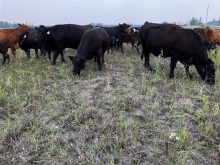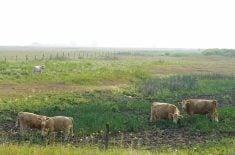Manitoba administrators of the Advance Payments Program say clients are making use of the increased interest-free portion and borrowing more money.
“The amount of the advances have [increased] significantly,” said Randy Ozunko, who manages the program for the Manitoba Pork Council.
The APP is federally funded and administered by producer groups. It offers up to $1 million in operating loans, with a portion of that loan offered interest free.
Read Also

Seeding Indigenous agricultural prosperity
National Circle for Indigenous Agriculture and Food says Indigenous agricultural success needs strong relationships.
Advances are repaid as farmers sell their production, with up to 18 months allowed to fully repay the advance for most commodities, and up to 24 months for cattle and bison.
This summer, the federal government increased the interest free portion to $250,000 from $100,000. The $250,000 interest-free portion will stay in place throughout the 2022 and 2023 program years.
As of Dec. 7, Manitoba Pork had advanced just over $16 million to 52 producers and Ozunko said there was at least one more application pending. Of that, nearly $12 million has been interest-free advances and about $4.4 million has been interest-bearing.
[RELATED] Take advantage of cash advances
Last year, 51 producers took out about $12.2 million in advances, with nearly $5 million in interest-free advances and $7.3 million in interest-bearing loans.
The Manitoba Crop Alliance has also seen an increase in dollars issued to clients, said chief operating officer Darcelle Graham, and roughly the same number of clients as last year.
In other areas of the country, administrators are seeing an uptick in applications.

The Canadian Canola Growers Association, one of 30 administrators of the program, has received about 8,000 applications so far this year, roughly 1,000 more than last year at this time, the farm group’s director of finance and operations said on Nov. 21.
The size of loans has also gone up, said Dave Gallant.
“Last year the average advance was $187,000,” he said. “This year, before the [interest] announcement, it was at $230,000. Today it’s hovering around $256,000.”
[RELATED] Alberta Farmer Express: Many farmers – but not all – are cashing in on interest-free loans
The increase in applications has been even higher at FarmCash, a division of Alberta Wheat.
About $60 million has been loaned to 319 producers so far this year, putting FarmCash on track to double last year’s total loans of $37 million to 196 producers.
“During this time of high interest rates, it’s becoming more imperative for producers to use low-interest financing tools,” said Syeda Khurram, chief operating officer of FarmCash.
“This is really helping them improve their bottom lines and giving them access to more cash flow to help them recover from last year’s drought and ongoing inflation.”
“Consider how much our input prices have increased,” said Jason Lenz, a grain producer near Bentley, Alta. “There is probably no better time to apply than now because this year’s crop was by far the most expensive crop we’ve ever grown as far as putting dollars into the ground.
“Having this program just gives you so much flexibility. I can buy my inputs for the next year at the right time or take advantage of some of the price opportunities that always happen in the fall,” he added.
Although the interest-free portion of the loan was increased to help producers fight the rising costs of fuel, fertilizer and seed, it can be used for virtually anything, Khurram said.
“As long as you’re an agricultural producer, you can apply for up to $1 million, and as long as you meet the criteria of payment timelines, you can use it wherever you want to.
“The federal government is not asking producers to do a report on where the advance is being used, so it could be anywhere on their farming operations.”
When it raised the interest-free portion in June, the government estimated borrowers would save an average of $5,500 in interest.
“One family was able to go on holiday just because they saved money through this financing tool,” said Khurram.
The prime rate has gone up since then. It was 3.7 per cent in June and has since risen to 5.95 per cent, with a further hike announced last week. When it upped the interest-free portion in June, the government also estimated it would cost $61 million over two years.
Applying for a cash advance is simple, said Lenz, noting he received his loan three days after submitting his application.
“It’s just so easy to do. Having those loan dollars in place allows me to sell my grain when I want to rather than when I need to. It’s saying that I can maybe wait for better pricing opportunities other than needing to sell to create some cash flow for my farm.”
Additional security is required for advances on products that are either in production or non-storable, as well as for loans where the security is animals or animal products. This can include potential proceeds from a risk management program such as AgriInsurance or AgriStability.
Because the advance is considered a loan, it is not considered income for tax purposes.
The program distributed $2.4 billion in advances last year to 17,430 producers across the country.
A list of cash advance administrators, as well as their administration fees and rates on the interest-bearing portion of the loans, can be found at the Government of Canada website.
















